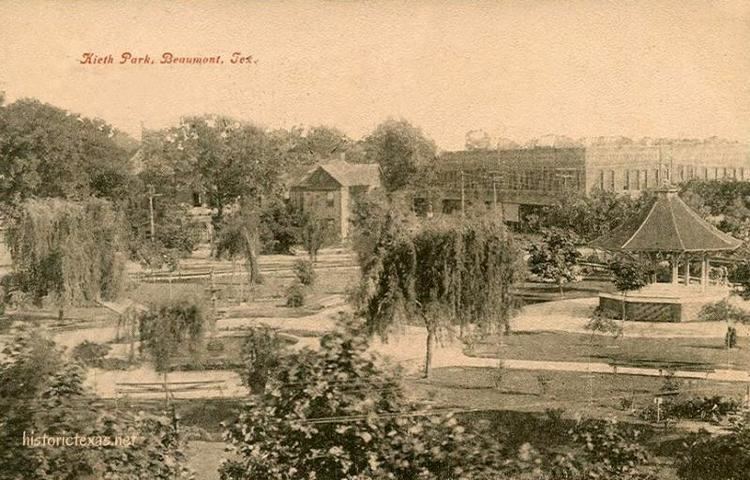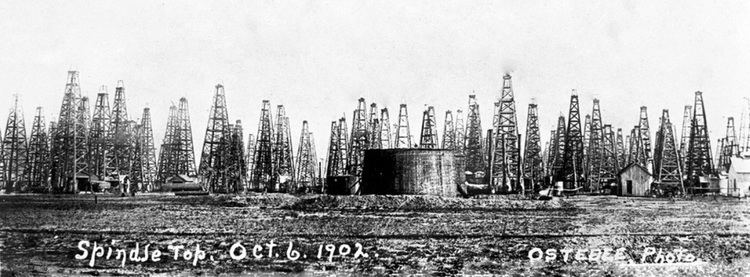Country United States of America Population 117,796 (2013) Unemployment rate 5.8% (Dec 2014) Area 85.9 sq mi | State | |
Colleges and Universities Lamar University, Lamar Institute of Technology, Kaplan College-Beaumont, Lamar University College of Engineering Points of interest McFaddin-Ward House, Spindletop-Gladys City Boomtown Museum, Edison Museum, Ford Park, Fire Museum of Texas | ||
Beaumont ( BOH-mont) is a city in and county seat of Jefferson County, Texas, United States, within the Beaumont–Port Arthur Metropolitan Statistical Area. The citys population was 118,296 at the 2010 census making it the twenty-fourth most populous city in the state of Texas. Beaumonts early history was centered around the lumber, farming, and port industries. A big change occurred in 1901 with the Spindletop gusher. The area transformed into one of the major petro-chemical refining areas in the country. Along with Port Arthur and Orange, Beaumont forms the Golden Triangle, a major industrial area on the Gulf Coast.
Contents
Map of Beaumont, Texas
Beaumont is home of Lamar University, a national Carnegie Doctoral Research university with 15,000 students. Over the years, several corporations called Beaumont home. For example, Gulf States Utilities had its headquarters in Beaumont until its absorption by Entergy Corporation in 1993. GSUs Edison Plaza headquarters is still the tallest building in Beaumont (as of 2011). With Spindletop, several current energy companies were spawned in Beaumont.
Beaumont texas travel destination
History

In 1824 Noah and Nancy Tevis settled on the west bank of the Neches River and organized a farm. Soon after that, a small community grew up around the farm, which was named Tevis Bluff or Neches River Settlement. In 1835 the land of Tevises together with nearby community of Santa Anna (in total, 50 acres (200,000 m2) or 200,000 m2) was purchased by Henry Millard (1796?–1844), Joseph Pulsifer (1805–1861) and Thomas B. Huling (1804–1865), who began planning a town to be laid out on this land. This town was named Beaumont, after Jefferson Beaumont the brother in law of Henry Millard.

Beaumont became a town on 16 December 1838. Joseph Perkins Pulsifer was a founding citizen of Beaumont. His firm, J.P. Pulsifer and Company, donated the first 50 acres (200,000 m2) upon which the town was founded. Beaumonts first mayor was Alexander Calder. From its founding in 1835, business activities included real estate, transportation expansion, and retail sales. Later, other businesses were formed, especially in railroad construction and operation, new building construction, lumber sales, and communications. They made Beaumont a successful regional shipping center. Beaumont was a small center for cattle raisers and farmers in its early years, and with an active riverport by the 1880s, it became an important lumber and rice-milling town. The Beaumont Rice Mill, founded in 1892 by Joseph Eloi Broussard, was the first commercial rice mill in Texas. Beaumonts lumber boom, which reached its peak in the late 19th century, was due in large part to the rebuilding and expansion of the railroads after the Civil War. The rise of Beaumonts mill economy drew many new residents to the city, many of them immigrants, among them a group of Jews who would go on to form a congregation. By the early 20th century, the city was served by the Southern Pacific, Kansas City Southern, Atchison, Topeka, and Santa Fe, and Missouri Pacific railroad systems.
Oil was discovered at nearby Spindletop on 10 January 1901. Spindletop became the first major oil field and one of the largest in American history. With the discovery of oil at Spindletop, Beaumonts population grew from 9,000 in January 1901 to 30,000 in March 1901. Oil is, and has always been, a major export of the city, and a major contributor to the national GDP.
Captain W. C. Tyrrell was a leading philanthropist during the early 20th century. He helped fund such projects as the opening of a commercial port in the city, the development of the local rice industry, the development of suburban property, as well as the donation of the citys first public library, the Tyrrell Historical Library.
The city became a major center for shipbuilding during World War II, as tens of thousands of rural Texans poured in for the new high-paying jobs. Housing was scarce and racial tension ran high when a race riot took place in Beaumont in June 1943 after workers at the Pennsylvania shipyard in Beaumont learned that a white woman had accused a black man of raping her. Thus, the riot in Beaumont added to World War II period race riots in Los Angeles, Detroit, Chicago as well as other cities across the country and repeated the war time riots which had occurred in other parts of the country during World War I.
In 1996, the Jefferson County courts, located in Beaumont, became the first court in the nation to implement electronic filing and service of court documents, eliminating the need for law firms to print and mail reams of documents.
In 2005 and 2008, Beaumont and surrounding areas suffered extensive damage from Hurricane Rita and Hurricane Ike. A mandatory evacuation was imposed upon its residents for about two weeks.
Economy
According to the Citys 2009 Comprehensive Annual Financial Report the top employers in the city are:
Geography
Beaumont is located at 30°4?48?N 94°7?36?W (30.079912, ?94.126653). According to the United States Census Bureau, the city has a total area of 85.9 square miles (222 km2), of which 85.0 square miles (220 km2) is land and 0.9 square miles (2.3 km2) (1.07%) is water.

Beaumont lies on Texas coastal plain, about 30 miles (48 km) inland from the Gulf of Mexico, and just south of the dense pine forests of East Texas. The city is bordered on the east by the Neches River and to the north by Pine Island Bayou. Before being settled, the area was crisscrossed by numerous small streams. Most of these streams have since been filled in or converted for drainage purposes. The island directly across from Riverfront Park is called Trinity Island. There are also three other islands in the Neches River around the downtown area/port: Harbor, Smith and Clark.
